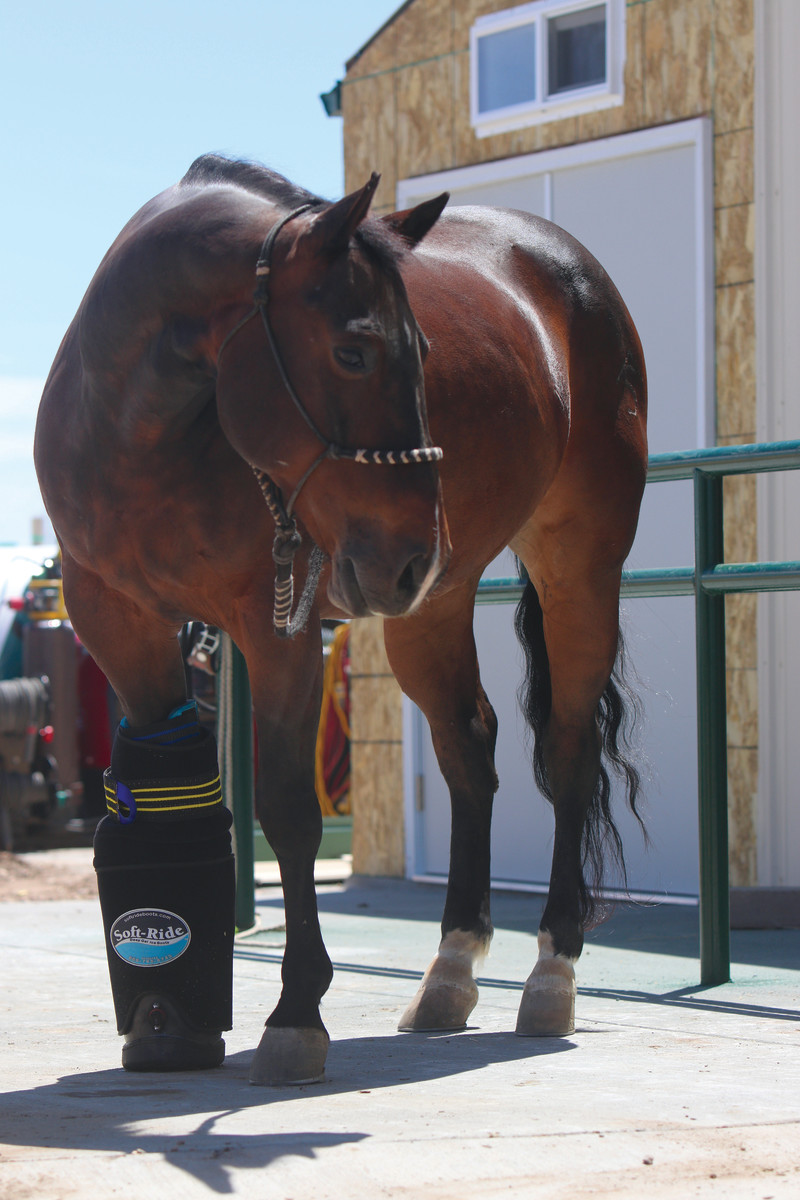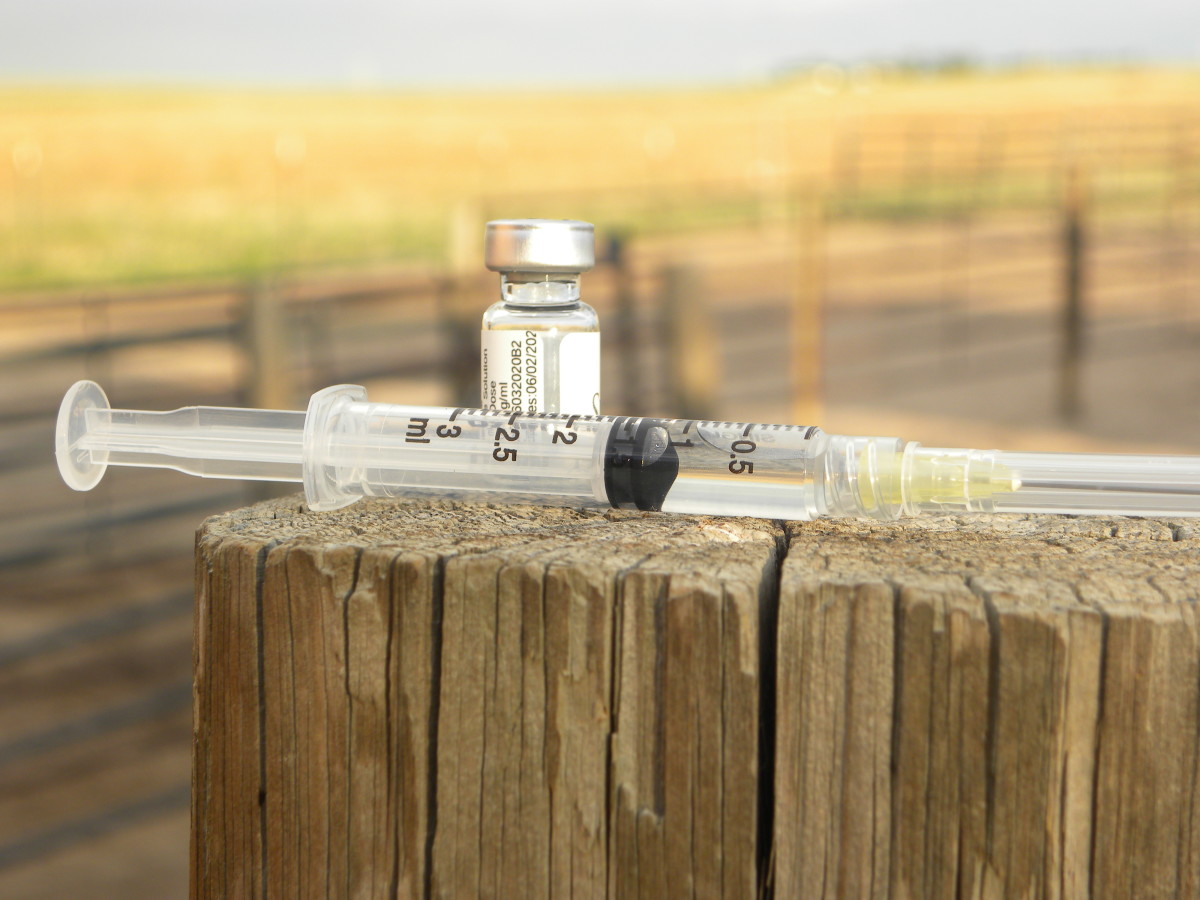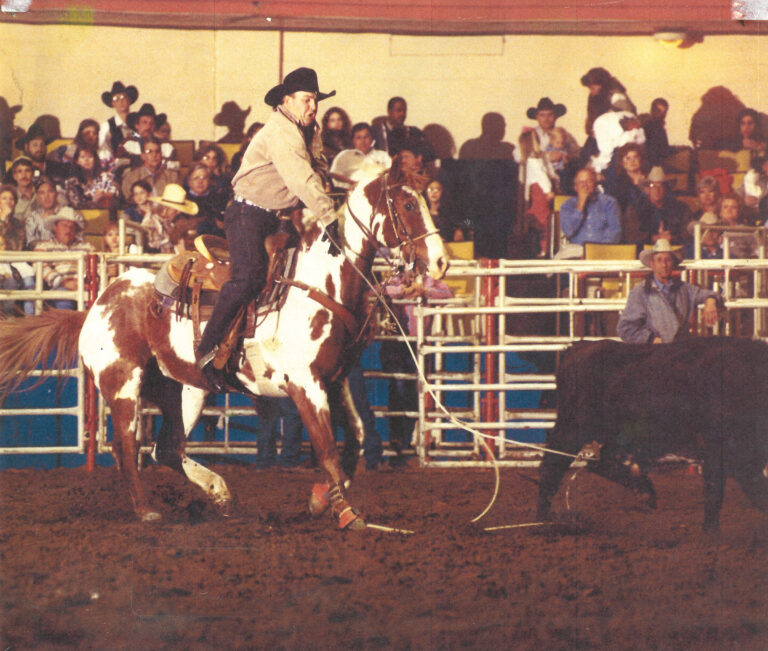Joint and Soft Tissue Health
Arthritis is a common byproduct of age and performance demands. Defined as inflammation of the joint, arthritis is a condition that horse owners can take proactive measures to help delay.
Arthritis can advance into osteoarthritis, which is a chronic, progressive disease that starts with synovitis, or inflammation of the synovial membrane that lines the surface of the joint. Synovitis, cartilage damage and changes to the bony structure of joints can painfully exacerbate, or even end, a performance horse’s career. Symptoms of equine osteoarthritis are all unpleasant and include stiffness, reduced range of motion, heat, swelling and behavior changes.
So what can ropers do to slow the march of time against their steady, solid and aging equine partners?
“Warm your horses up and cool them down to prevent swelling and stiffness,” said Joe Stricklin, DVM. “Let them roll, offer turnout time, regular maintenance and a diet sensitive to the needs of an aging performance horse.”
Simple but thoughtful measures combined with guidance from a trusted veterinary professional can help you buy more years of use according to Stricklin.
“With any horse of any age, it’s always a good idea to be proactive with respect to joint health and maintenance,” Stricklin said. “It’s of great benefit as working horses age to do what you can to keep their joints as healthy as possible. There have been a lot of good products developed, whether oral or injectable, that can help support healthy joint function.”
A few such joint therapies have been on the market for the past few decades and have helped aging equine athletes withstand their individual job requirements while delaying the onset of osteoarthritis. Legend (hyaluronate sodium) is a drug that can be administered intravenously and is commonly used to combat arthritis. Adequan (polysulfated glycosaminoglycan) functions similarly. Additionally, injectable products that contain hyaluronic acid or polysulfated-based active ingredients such as polysulfated glycosaminoglycan (PSGAG) and pentosan polysulfate sodium (PPS) are common choices, depending upon the progression of joint dysfunction, performance demands
and many other factors to be considered by your veterinarian before determining treatment protocols.
“Legend, Adequan, Pentosan and Polyglycan are all drugs that work in varying degrees to help lubricate the joint,” Stricklin explained. “There are different combinations that work well depending upon the horse’s individual circumstances and needs. Some horses are going to require joint injections; some can be well maintained with anti-inflammatory medications like Equioxx. There are a lot of different modalities that can be incorporated to help keep these older equine athletes feeling good.”
Stricklin says taking the time to ice soft tissue areas and high motion joints, or even rehab horses in swimming facilities where less concussion from the ground is inflicted on their joints, are measures that can help prolong your horse’s competitive lifespan.
“All these different things can help, depending upon the horse,” Stricklin said. “I tell people to take the time to poultice the lower legs to help increase circulation and prevent stasis of those joints. Icing occasionally, applying poultice and wraps helps prevent inflammation and hopefully prolongs the onset of arthritis.”

Stricklin is also an advocate of letting a horse be a horse by budgeting time for them to relax, stretch, roll and graze.
“I think one thing people tend to overlook is how horses can keep themselves
feeling good just by the simple act of you unsaddling them and letting them get out and roll after a day at the roping or rodeo. Lots of self-adjusting goes on when a horse gets out to roll and stretch, especially one that’s been confined to a box stall for a prolonged period of time during the course of an event.”
When asked about what issues he sees more commonly than others in older rope horses, Dr. Stricklin says he sees a prevalence of fetlock issues come into his practice. He thinks horses deal with fetlock and other joint issues simply by virtue of their line of work.
“A calf horse that is stopping hard has to buffer the jerk,” he offered as an example. “The first thing people want to look at is hocks and stifles. For so long, people have thought about hocks and stifles in relation to performance horses because these horses are stopping and turning at a high rate of speed, but I also see a prevalence of fetlock issues that tend to be a bit more overlooked.”
Stricklin says the soundness issues that commonly develop in older, and even some of the younger, performance horses, can be successfully treated in a variety of different ways. He’s had good results using platelet-rich plasma (PRP) and interleukin receptor antagonist protein (IRAP), two regenerative therapies. He adds that stem cell therapy is used more so to benefit the tendons and ligaments.
“We have a lot more bullets now than we did 15 years ago,” Stricklin said. “It’s a great idea to have your veterinarian go through your horses in the spring. I tell my clients to be riding them a little first before bringing them in for a physical examination so if lameness is going to surface it’s got a chance to show up because the horse has been getting used. Ride them for a couple of weeks and then we’ve got a better indication of what the horse is dealing with after he goes back to work.”

Beyond regular physicals, Stricklin says never ignore an abrupt change in how your horse is working.
“Anytime you notice a decrease in performance, especially in that steady competitor that suddenly changes and isn’t working up to the norm, that’s a likely indication that there’s something your veterinarian needs to investigate further.
“Some older horses are not going to be the ones you want to use in practice,” Stricklin said. “You might want to save the dependable, predictable horse for the rodeo and practice on something else. They only have so many runs in them; that’s a fact.”
Travel Considerations
Older horses don’t always bounce back from the stress of hauling as well as their youthful counterparts. Basic rules of hauling tend to be the same for horses of all ages, but they become particularly important for geriatrics.
“I advise people to feed electrolytes, make absolutely certain the horse is drinking adequately, and keep your hay that you feed on the road the same or similar to what your horses are accustomed to getting at home,” said Stricklin.
Even seasoned road warriors can use a little gastric support as well.
“It’s a smart idea to put horses on ulcer medication like UlcerGard (omeprazole) when traveling to calm the stomach acid that flairs up as a result of stress from hauling, stalling and competing,” said Stricklin.
Stricklin says a little extra TLC can go a long way to discourage the stiffness and fatigue that can result from a long trailer ride.
“When you can, it’s a good idea to give yourself some extra time to get to an event a little early so your horse has time to rest and acclimate,” he said. “These steps in planning help any horse, but are especially important for older horses that tire a bit more easily. People also have good results using hauling boots like the Soft-Rides to decrease concussion on the legs. Anything you can do to decrease stress and increase hydration, get them out and move them around, those are the best things you can do.”
Cushing’s Disease
Certain diseases more commonly assault senior horses. Pituitary pars intermedia dysfunction (PPID), or equine Cushing’s disease, is one of them. The enlargement of the pituitary gland, which causes the release of certain hormones that disrupt the horse’s metabolic balance, is what causes Cushing’s.
Symptoms of Cushing’s include long hair and delayed shedding, muscle wasting, abnormal fat distribution, lethargy, and potbelly or weight gain, among others.
“Cushing’s happens more after the performance years than when they’re taking the constant maintenance,” Stricklin said. “You see it lots more in kids’ horses that are pretty advanced in years. It’s a condition that has to do a lot with the function of the thyroid causing insulin issues.”
If your older horse—say late teens to early 20s—starts experiencing metabolic imbalance, there are a few signs of Cushing’s disease to watch for, according to Stricklin.
“Early signs of Cushing’s include a cresty neck, they don’t shed off good, and they’ll sometimes get a long, thick hair coat. Due to the metabolic imbalance, they’ll often become somewhat laminitic due to not processing sugars,” Stricklin said.
Stricklin says that continued exercise and thoughtful maintenance can help delay the onset of the disease, thus attention to care and the horse’s level of activity both become very important.
“In the Open rope horse world, you don’t see it quite as much because these horses are still used and worked on a regular basis,” Stricklin said. “It’s pretty well documented that older horses—and I’d put that age at about 20 on up—when those aged horses are able to be out and moving around, they do much better with metabolic issues. When they’re out, they’re moving around, which also stimulates production of joint fluid. Better joint support as performance horses age is a big deal.”
In general, older performance horses tend to do much better with proper diet, regular physicals performed by your veterinarian and an adequate turnout schedule. However, should your horse develop Cushing’s, Stricklin says there are good treatment options on the market.
“We’ve got Prascend®, which helps with pituitary gland function. This drug helps horses regulate the way in which insulin is processed,” Stricklin said.
Prascend® is the brand name of the drug pergolide mesylate, which is FDA approved for treatment of Cushing’s and has been available for about a decade.
Beyond exercise and medication, Stricklin says a low starch, low sugar diet is helpful for horses with Cushing’s, as well as for those with laminitis issues, since the two problems can go hand in hand.
Laminitis
Laminitis is an inflammatory disease of the leaf-like laminae that suspend the coffin bone within the hoof. In severe cases, the coffin bone rotates. Cushing’s disease and Equine Metabolic Syndrome (EMS) are contributing conditions to laminitis. Horses with insulin issues can have laminitic issues, and, as already noted, will do better with a customized diet and exercise program (if exercise is an option).
While not all laminitic horses are obese, diet and exercise combined are the best ways to prevent laminitis. If exercise isn’t an option, diet is even more critical. Avoid high starch diets, abrupt diet changes, as well as an excessive amount of lush, green grass that is high in sugar. When bland winter pastures give way to lush green grass in the springtime, it’s tempting to allow horses as much pasture time as they can take—except that horses with insulin issues can’t take much of it.
“In the early spring and summer months, depending upon the climate in the region where you live, you have to watch how much turnout time you offer on rich, grass pasture. On warmer days, you can worry less about it because higher temperatures later in the day burn the sugars out of the grass,” Stricklin said.
In the case of laminitic horses, sometimes less is more and simple diet changes and a little TLC can pay off.
Summing Up
Even if your mount is not a horse with a household team roping name, keeping a good one sound and happy does pay off. The “Steady Eddy” in your barn deserves great care to age gracefully.
About Joe Stricklin, DVM
Joe Stricklin, DVM, graduated from Texas A&M University in 1980. He then established Equine Care Hospital in Abilene, Texas, where he practiced for 18 years before moving to Colorado to teach in the equine division of the Colorado State University Veterinary Hospital for seven years. Dr. Stricklin transitioned to private practice following his time at CSU and has been working out of his personal practice in Greeley for the past 13 years, where his focus is equine lameness and dentistry.
Dr. Stricklin was raised around horses and is an avid team roper.









